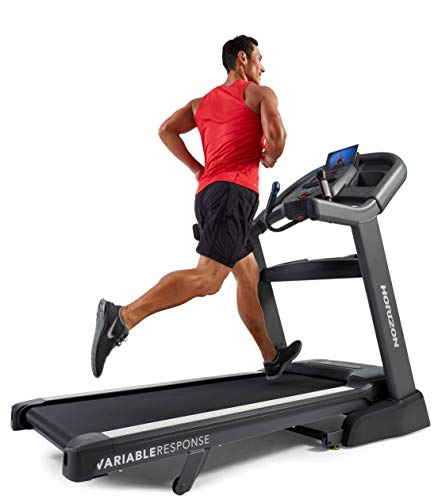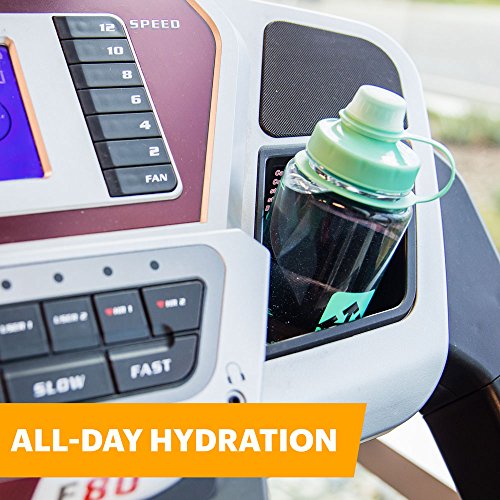Image credit to Ryder Wear ♦
Many runners experience back pain, especially lower back pain. However, research shows that back pain is less common among runners. So, although running is not bad for your back, there are several things you can do to avoid suffering from back pain while and after running.
A sedentary lifestyle significantly increases the incidence of recurring low back pain. But runners have other factors that can lead to nonspecific lower back pain.
The main causes of back pain while and after running are:
- Hyperlordosis – A condition that occurs when the lower back experiences stress or extra weight and is arched to point of muscle pain or spasms.
- Muscle strains and sprains.
- Excessive wear and tear of the spinal discs, known as degenerative disc disease (DDD).
Disclaimer: This post is not medical advice and is not intended to provide diagnosis or treatment for any medical conditions. Please consult a physician or other health care professional for your specific health care and/or medical needs or concerns.
Here are 8 tips for preventing lower back pain while and after running:
1. Suitable Running Shoes
Wearing the wrong or worn-out running shoes can lead to lower back pain.
Running shoes need to fit your feet, running activity, style, body weight, and the surface on which you run.
Click on the link below to read more on how to find the best running shoes for you:
What to look for when buying running shoes?
Highly Cushioned Running Shoes May Contribute to Back Pain
Highly cushioned running shoes absorb shock and help to protect the joints, but they may also change the way your foot hits the ground.
Several studies have demonstrated that runners land harder when landing on cushioned surfaces. Some cushioned running shoes can force the impact toward the middle of the foot and the toes rather than the heel. This may create a misalignment that can radiate to your lower back over time and lead to back pain.
Insoles Can Help
Shoe inserts are sometimes used to treat lower back pain in people who have a pronated foot function or type of foot dysfunction or imbalance. A study showed that interventions that modify foot function, such as wearing orthotic insoles, may help reduce or even prevent lower back pain.
2. Strength Training For Runners
Strength training for runners and exercises that improve your posture helps prevent back pain from running.
When our core, glutes, hips, or hamstrings are weak, the back muscles work harder to compensate. So you should do strength exercises that focus on those muscles.
Regarding the training frequency, the Office of Disease Prevention and Health Promotion recommendation is to do back-strengthening and stretching exercises at least two days a week.

3. Doing A Proper Warm-up
A warm-up before a run helps us to run faster and reduces the risk of injuries. However, when suffering from lower back pain a proper warm-up is crucial.
A proper warm-up includes the following 3 steps detailed in the Warm-up Before Running post:
1) Dynamic warm-up to lubricate the joints
2) Technique exercises
3) Walking/Easy running
To protect your back, you must also do warm-up exercises for the spine. Such as the Cat / Cow exercise.
In the following link, there are 8 example exercises for your back to include in your warm-up routine:
Warm-Up Exercises to Protect the Back
4. Avoid Overtraining
Not giving yourself enough recovery time leads to injuries and pains, such as lower back pain.
When you overtrain, there is a risk of stretching or tearing the muscles and ligaments in your lower back, which can lead to symptoms such as pain, stiffness, and muscle spasms.
10 Signs That Indicate Overtraining:
- Persistent injuries or muscle pain.
- A decline in performance.
- The legs feel heavy and tired.
- Persistent fatigue.
- Increased irritability and moodiness.
- Feeling slower and weaker.
- Loss of motivation.
- Reduced appetite and weight loss.
- No Period.
- Higher heart rate

How To Avoid Overtraining:
- Training Plan
Work with a training plan and increase mileage gradually.
- Rest Days
Rest days are necessary for your recovery and performance. So, after an intensive run, take at least one day off.
- Rest Weeks – Fourth Week Rule
You can have rest weeks. For example, cut the weekly mileage by 50% every fourth week.
- Doing Other Fitness Activities
Include some cross-training or strength workouts in your training schedule. Doing activities other than running works on different muscles and prevents boredom. Additionally, it can give your running muscles and joints a break for recovery.
5. A Good Night’s Sleep
Getting enough sleep is needed to avoid low back pain. A good sleep gives your spine time to recover from the previous day’s activities. It also helps the spine decompress after running.
However, getting too much sleep is not good for you either. Because people who oversleep are more likely to experience back pain.
Usually, the reasons for back pain after a night’s sleep are:
- An old or wrong mattress
- Poor sleeping position
- Laying on your back for long periods
6. A Good Running Form
A poor running technique may lead to lower back pain and other pains and eventually turn into irritating injuries.
However, a proper running technique will help you reduce the impact on your body as you run.
Additionally, a good technique will help you maintain proper running posture and control of the lumbopelvic region, which reduces pressure on the lumbar spine and reduce back pain.
So, although there is a debate about whether there is one correct running technique or whether it varies from person to person, most experts agree on the following guidelines:
- Run from your hips, and drive forward with your knees.
- Your body should be leaning slightly forward from the ankles and the spine at a moderate angle.
- Upper body while running:
Keep your upper torso straight, so the head should be up with your eyes looking ahead.
The shoulders need to be relaxed and slightly pulled back. - Swing your arms naturally while your elbows are about 90 degrees and close to your body.
- Although most runners and even elite runners are heel strikers, it is recommended to land with the forefoot or mid-foot, but not with the heel. Thus reducing stress on your joints during the run.
When running on a treadmill, maintain a correct posture by keeping your shoulders back, your body upright, and your head up.
Do not lean forward because the treadmill pulls your feet backward. Unless you are using a steep incline, that may require leaning forward.
If you lean forward too much, you may end up with lower back and neck pains.
7. Yoga For Runners
Yoga is a mind-body exercise that combines physical postures, controlled breathing, and meditation to achieve relaxation, which is often recommended to treat not only back pain but the stress that accompanies it.
Practicing yoga for even a few minutes a day can help to prevent or relieve back pain.
So, runners with limited time can include a few yoga poses in the cool-down after a run.
Following are several yoga poses that may be helpful in treating back pain recommended by Healthline (with example videos):
- Child’s Pose (highly recommended)
- Cat-Cow (highly recommended)
- Two-Knee Spinal Twist (highly recommended)
- Downward-Facing Dog
- Extended Triangle
- Sphinx Pose
- Cobra Pose
- Locust Pose
- Bridge Pose
Notice: If you feel pain while doing a pose, stop the practice (especially when practicing poses 4 – 10).
Yoga Child’s Pose Is Great For Relieving Low Back Pain
8. Running Downhill – Smaller Steps and Avoid If Possible
Downhill running without proper engagement of the core muscles can put a lot of pressure on the lower back, resulting in pain and soreness afterward.
So generally, if you suffer from back pain, you should avoid running downhill as much as possible.
How to Run Downhill Properly
While running downhill, you should shorten your stride and take smaller steps, especially when there is a steep descent.
Our instinct is to lean back when running downhill. But this puts a strain on your joints and lower back. Therefore it is better to lean forward.
A lot of people can develop stress in their lower back from being unaware of keeping their core strength as they run downhill. Also, holding your stomach in as you run down steep hills can take a lot of pressure off your lower back.
Finally, if the terrain is too steep, do not hesitate to slow down and walk.
➤ References
- T Videman, S Sarna, M C Battié, S Koskinen, K Gill, H Paananen, L Gibbons (1995): “The Long-Term Effects of Physical Loading and Exercise Lifestyles on Back-Related Symptoms, Disability, and Spinal Pathology Among Men“. Published by Spine Journal. https://journals.lww.com/spinejournal/Abstract/1995/03150/The_Long_Term_Effects_of_Physical_Loading_and.11.aspx
- “Everything You Need to Know About Hyperlordosis“. Published by Healthline’s Medical Affairs. Medically reviewed by William Morrison, M.D. — By Marjorie Hecht — Updated on September 2, 2018. https://www.healthline.com/health/hyperlordosis
- Chaunie Brusie, Jason M. Highsmith, MD Neurosurgeon (Aug 24, 2021): “Degenerative Disc Disease Symptoms, Causes, Treatments and More“. Published on SpineUniverse .
https://www.spineuniverse.com/conditions/degenerative-disc-disease - Rice, Hannah M.; Jamison, Steve T.; Davis, Irene S. (2016): “Influence of Footwear and Foot Strike on Load Rates during Running“. Published on Medicine & Science in Sports & Exercise.
https://journals.lww.com/acsm-msse/Fulltext/2016/12000/Footwear_Matters__Influence_of_Footwear_and_Foot.14.aspx - Hylton B. Menz, Alyssa B. Dufour, Jody L. Riskowski, Howard J. Hillstrom, and Marian T. Hannan (2013) “Foot posture, foot function and low back pain: the Framingham Foot Study“. Rheumatology 52(12) pp2275–2282. Available on: https://academic.oup.com/rheumatology/article/52/12/2275/1802417
- “Prevent Back Pain” (2021). Published on: Healthfinder.gov. Provided by: U.S. Department of Health and Human Services.
https://health.gov/myhealthfinder/healthy-living/safety/prevent-back-pain - Henry Halse (2019): “Pre-Workout Stretches to Protect the Back“. Published on LIVESTRONG.com.
https://www.livestrong.com/article/106856-warmup-exercises-protect-back/ - Rory McAllister (2022): “Is Heel Striking Dangerous? The Latest Research On Heel Strike Vs Forefoot Running“. Published on Marathon Handbook.
https://marathonhandbook.com/forefoot-vs-heel-strike-running/ - “The 10 Best Yoga Poses for Back Pain“. Published by Healthline’s Medical Affairs. Medically reviewed by Gregory Minnis, DPT, Physical Therapy — By Emily Cronkleton — Updated on August 25, 2020. https://www.healthline.com/health/fitness-exercise/yoga-for-back-pain




























